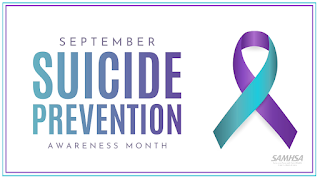Cyberbullying & Remote Learning
The rapid growth of technology in our society has led to a new type of bullying...cyberbullying. A surprisingly high number of students report being a victim of this type of bullying. According to a 2019 report from the CDC, cyberbullying among public school students is highest for middle school at 33%, followed by high school at 30%. Even 5% of elementary students report having been cyberbullied. Due to the impact of Covid-19 in 2020, many schools have had to switch to remote or distance learning. This situation has increased opportunities for cyberbullying since most learning occurs in virtual classrooms and other online platforms.
Children and teenagers are often more tech-savvy than their parents/guardians which can make it challenging to monitor their online behavior. Like other forms of bullying, cyberbullying can cause significant stress and emotional problems for the child, so it is important for parents/guardians to know the different ways children and teenagers can be bullied online. Cyberbullying includes but is not limited to circulating or sending photos, sending or posting hurtful messages, hacking someone else’s account, pretending to be someone else online, and sending or posting threats. Cyberbullying can occur on social media platforms, through text messages/email/instant messaging, within online forums such as chat rooms and message boards, and even in online gaming communities.
Although all bullying involves intentional, often repetitive, hurtful behavior toward another person or group, according to Pacer.org, cyberbullying presents several additional challenges. First, given the easy access to technology, cyberbullying can happen any time of the day. It is also more difficult to detect because it isn’t as overt as physical or in-person verbal bullying. Since cyberbullying can be done anonymously, the victim may not know who the bully is, so no one is held accountable. Another unique feature of cyberbullying is that it enables the bully to spread information quickly to large groups. This makes it difficult to contain or stop negative information from being disseminated. Cyberbullying is also challenging because it is conducted at a distance from the victim and therefore, the bully may not see the harm it causes. In a sense, technology distances bullies from the damaging effects of their actions. Finally, the impact of cyberbullying can be permanent because it is difficult to remove or delete information once it is shared on the internet.
So how can parents/guardians prevent and protect their children from cyberbullying without banning them from technology altogether? According to Stopbullying.gov, it is important for parents/guardians to initiate open and honest conversations with their kids about appropriate digital behavior. Those discussions should include guidance on how to view/post content, which apps they can and cannot use, and the parameters around how parents/guardians will check in/monitor their online use, browsing history, and communications. Other tips for parents/guardians include reviewing or re-setting your child’s phone location and privacy settings, following or “friending” your child on social media sites, staying up to date with the latest apps, online platforms, and digital slang, and knowing your child’s usernames and passwords. Parents/guardians may also want to consider software options and apps that are available to help them limit/restrict content, block domains, and/or view online activities.
Even if parents/guardians are following all of this advice, it is still critically important that they be aware of possible warning signs that their child is being cyberbullied. Sometimes the very best monitoring efforts might miss a potential problem. According to Stopbullying.org, some of the most common signs include:
- Noticeable increases or decreases in device use, including texting.
- Exhibits emotional responses (laughter, anger, upset) to what is happening on their device.
- Hides their screen or device when others are near, and avoids discussion about what they are doing on their device.
- Shuts down social media accounts or new ones appear.
- Starts to avoid social situations, even those that were previously enjoyed.
- Becomes withdrawn or depressed, or loses interest in people and activities.
So what should parents/guardians do if they discover cyberbullying? According to Stopbullying.gov, the most important step is to document and report the behavior so that it can be addressed. Instead of responding to or forwarding cyberbullying messages, block the person who is cyberbullying. More specific and complete information regarding how and where to report cyberbullying can be found at Stopbullying.gov. During this time of remote instruction, it is more important than ever to communicate with your child’s school if you suspect cyberbullying is occurring. To anonymously report an incident of bullying, the WSFCS has set up an anonymous bullying tip line. Visit Bullying Tip Line or call 336-703-4193.




Comments
Post a Comment